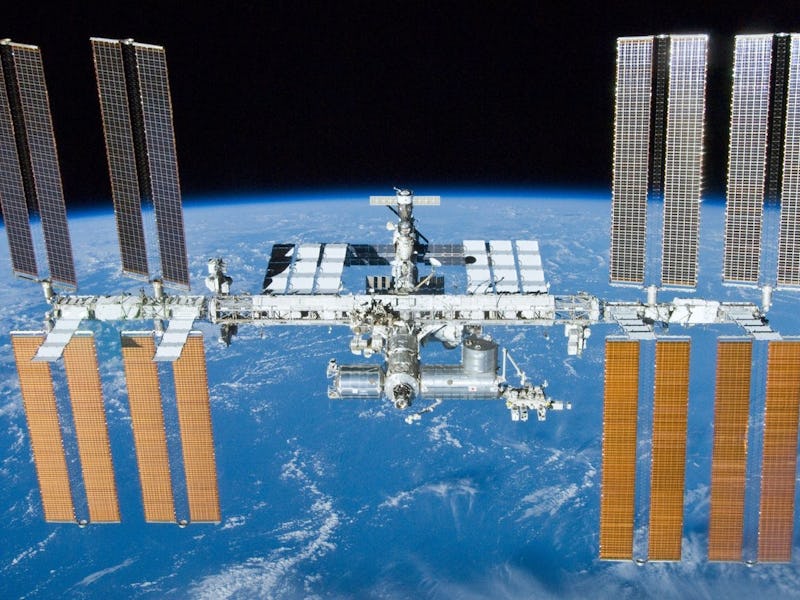How 3D-Printed Organs at the International Space Station May Cure Diseases
A new research project is exploring the idea.

William Wagner is searching for the heart of the future, and it could be somewhere in the night sky.
The director of the McGowan Institute for Regenerative Medicine at the University of Pittsburgh, a 250-strong team focused on organ and tissue failure, is at the center of possibly one of the most exciting projects in biomedical research today: can you use 3D printers to create new organs for people in space?
The ability to create new organs using stem cells is an exciting area of research that could help save lives, ending the scourge of donor shortages. Studying the concept further in microgravity could teach the team more about how these cells act, while enabling them to build more complex organs that could inform research on Earth. Early findings also suggest that these studies could reveal more about certain diseases.
This vision came a bit closer to reality this week, when Wagner’s institute announced a multi-year research alliance with the International Space Station’s United States National Laboratory to explore the area further. The institute will develop facilities on Earth while working with the lab on flight opportunities to study experiments in the orbiting lab.
“There’s been a lot of neat discovery science done on the space station,” Wagner tells Inverse. “Let’s see what happens when we put stem cells in space. Oh, gosh, they stay more stem-like and they divide better! Okay, well, now what?”
3D-Printed Organs: The Answer Could Be In the Stars
Slowly but surely, organ printing is developing. At a 2016 conference, CELLINK detailed a future where organ shortages were a thing of the past. A team in May 2017 succesfully implanted artificial ovaries in mice. A Rutgers University group of researchers created a 3D-printable water gel that could one day help researchers print organs.
SpaceX’s CRS-18 resupply mission, which launched July 21 carrying Nickelodeon slime, also carried a Techshot biofabrication utility designed for exploring this area further:
Wagner’s team is focused on using stem cells to fabricate new organs. These cells, which can further split into specialized cells, are also being used in the nascent area of lab-grown meat. Wagner explains that both areas involve similar problems of growing cells in a certain manner and rate. But while lab-based burgers could hit plates as early as 2021, printed livers and the like are nowhere near ready.
“I can tell you from my perspective, organ printing’s got a long, long, long way to go,” Wagner says. “There’s a lot of barriers. At the same time, it’s exciting. There’s a lot of hope there if we can overcome any of these barriers.”
One potential area of interest is in organ-on-a-chip. These miniature versions of a full-size organ, which takes on a small portion of the organ’s functions, could explain how to cure certain diseases. Wagner notes that some people have taken these chips into space and noticed they could end up mimicking diseases like kidney failure.
An opportunity like that could be ideal for a pharmaceutical company researching kidney disease. As the research develops, the team hopes to find other potential avenues that could spark an investor’s interest enough to bring them on board.
“We’re trying to really go from saying, we’re going to print organs and grow stem cells in space to say, is this real enough that a hard-nosed investor would take a chance on doing it,” Wagner says. “Kind of like Elon Musk. You see it’s not been done yet, there’s risk involved, but I can connect the dots, and if I’m successful with this, it’s gonna have a payoff.”
The payoff could mean the end of organ shortages forever.